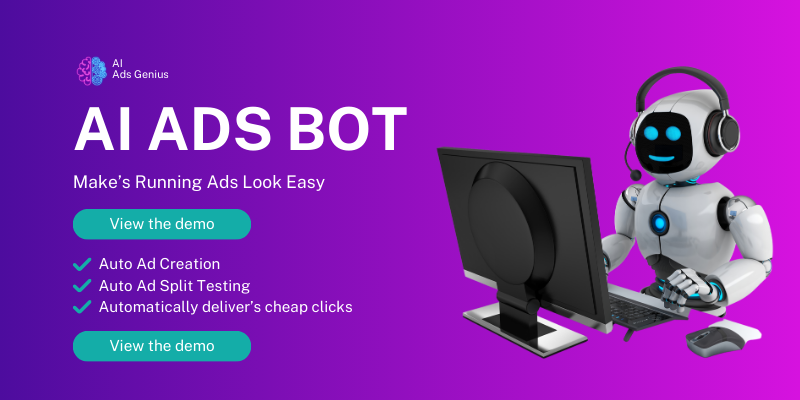Understand the Importance of a Testing Period
Why Testing is Key
When I first dived into the world of Facebook ads, I quickly learned that testing is everything. It’s like a scientist discovering the right formula; you need to experiment. A good testing period allows you to gather data and see what resonates with your audience. Trust me, skipping this step is like driving blindfolded—you just won’t get anywhere!
Beyond just gathering likes or engagement, a testing period helps you highlight the strengths and weaknesses of different ads. This means you get to refine your approach, optimizing your budget and increasing your ROI. A well-executed testing phase lets you tweak the details—the image, the copy, the call-to-action—until you hit the sweet spot!
It’s also crucial to remember that Facebook’s algorithms need a bit of time to figure out who your ads should target. So give it a breather and let it do its magic. Patience truly pays off in this realm.
Setting Clear Objectives for Your Ads
Defining What Success Looks Like
If you’re like me, the first thing that comes to mind when putting together an ad campaign is: what do I actually want from this? Setting clear objectives is like having a roadmap; without it, you’re wandering around without a clue. Maybe you want to drive traffic to your site, boost brand awareness, or even generate leads—whatever it is, be crystal clear about it.
Your objectives will shape everything from your targeting to your copy. I’ve had campaigns go south because I didn’t have specific goals in mind. Trust me, clarity is your best friend here. Plus, when you know what you’re aiming for, you can measure whether your ads are doing their job effectively.
Moreover, define what success means for you. Is it a certain number of clicks? Increased sales? Understanding this will guide your optimization process. You’ll know when to keep rolling with a campaign and when to make adjustments.
Monitoring Performance Metrics
Key Metrics to Keep an Eye On
Let’s face it: numbers can be intimidating, especially when it comes to marketing, but monitoring performance metrics is key if you want to see results. I always keep an eye on metrics like click-through rates, conversion rates, and cost per lead. These numbers tell me a lot about how well my ads are performing and what adjustments I might need to make.
The great thing about Facebook is its analytics tools. They’re pretty robust, giving you insights into audience engagement that can be invaluable. Pay attention to where your audience is coming from, what they interact with, and how often they’re taking action. This data will empower you to make informed decisions and refine your ads.
Remember, performance metrics aren’t just numbers—they’re feedback! They can highlight what’s working and what’s not. So take the time to dig into your metrics; you won’t regret it!
Ad Frequency and Audience Saturation
How Often Should Your Ads Be Seen?
One moment I learned the hard way was that audience saturation can kill your campaign. If the same ad pops up too many times in my audience’s feed, they’ll start tuning it out. That’s why monitoring ad frequency is crucial! I’ve seen ads that were once effective drop off significantly because viewers had seen them too often—classic advertising fatigue.
It’s a fine balance; I’ve had success with a frequency of about 1 to 3 times per week. That way, my audience sees the ad without feeling like it’s monopolizing their feed. Mix things up by rotating different ads or updating your creatives to keep your audience engaged.
Watch this metric closely. If frequency starts creeping up and engagement drops, it might be time to refresh your approach and create new content. Your audience will thank you!
Continual Learning and Adaptation
Stay Updated With Trends
The marketing landscape never stays the same for long. That’s why continual learning is essential. As someone who has been in the game for a while, I’m always reading up on the latest trends, strategies, and changes in Facebook’s algorithms. The social media landscape can shift overnight, and staying informed can give you a competitive edge.
Join Facebook groups, attend webinars, or just network with other marketers. Learning from others’ experiences—both good and bad—can show you new paths to optimization. It’s also a great way to find inspiration for your ads!
Finally, don’t be afraid to try new things and experiment with your ads. Sometimes, the most unexpected change can yield phenomenal results. Embrace the idea of adaptation and don’t get stuck in your ways!
FAQs
- How long does it take for Facebook ads to optimize?
Typically, you should give your Facebook ads at least a week or two to gather enough data for optimization.
- What key metrics should I track for my Facebook ads?
Focus on metrics like click-through rates, conversion rates, and engagement rates to understand your ads’ performance.
- Why is audience saturation a problem?
Audience saturation happens when the same ad is shown too frequently, leading to reduced engagement and effectiveness.
- How can I keep my ads fresh?
Rotate your creatives, update your ad copy, and change your target audience periodically to avoid ad fatigue.
- What should I do if my ads aren’t performing well?
Evaluate your targeting, ad copy, and performance metrics. Don’t hesitate to adjust your strategy based on your findings!

